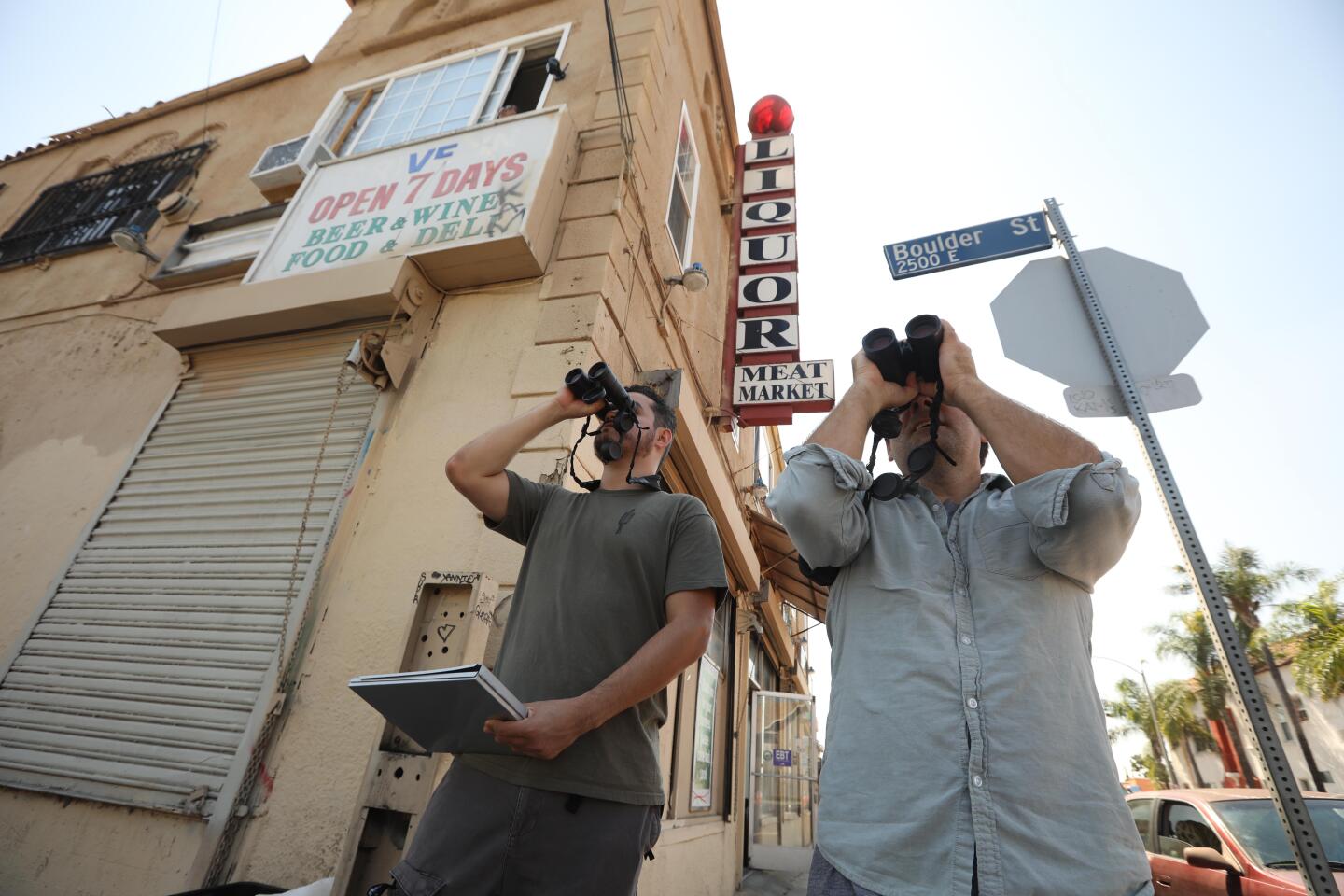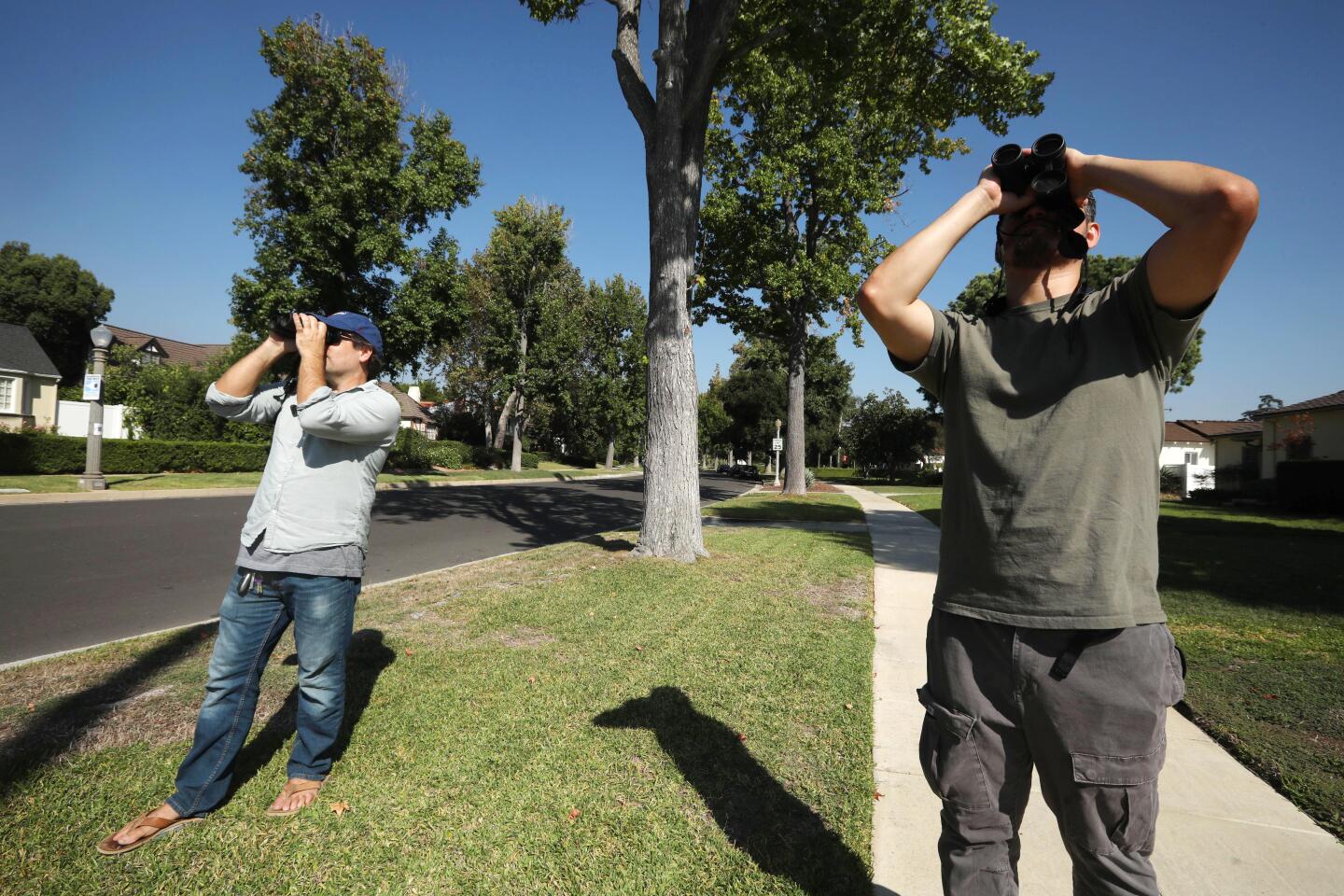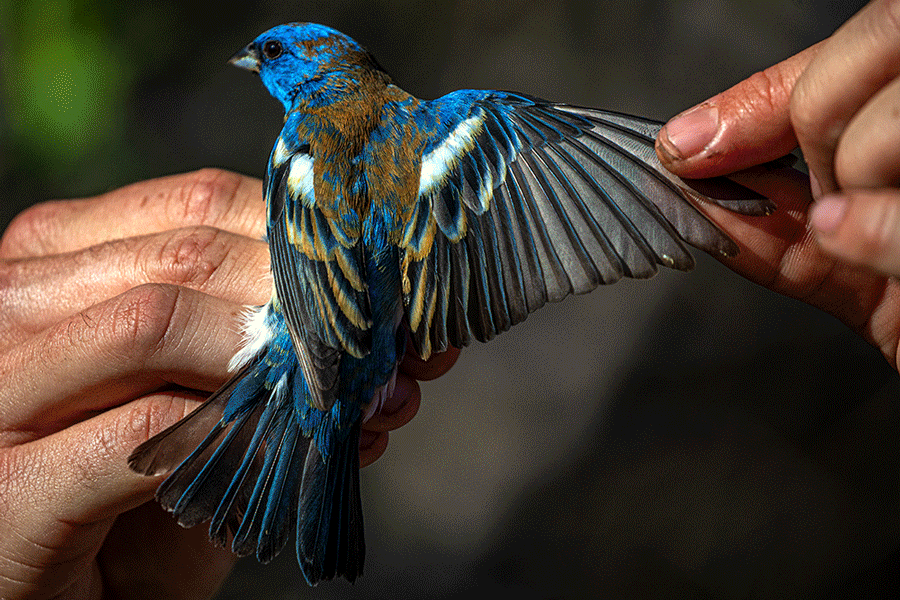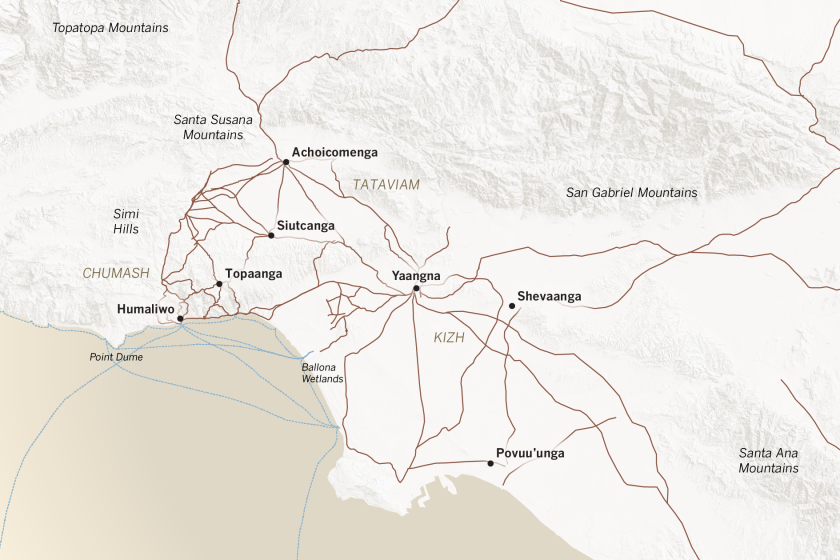- Share via
On a recent afternoon in L.A.’s Boyle Heights neighborhood, Christian Benitez and Eric M. Wood stood outside a corner liquor store searching for birds.
The researchers spotted a house sparrow and pulled binoculars to their eyes. “They’re all over the shrubbery in Boyle Heights,” said Wood, an associate professor of ecology at Cal State Los Angeles.
Aggressive and impactful reporting on climate change, the environment, health and science.
Among the most ubiquitous and abundant songbirds in the world, house sparrows are urban creatures that thrive where people do. They’re resilient, adaptable and aggressive, and are found around buildings and streets, scavenging food crumbs or nesting in roof tiles.
But less than 10 miles to the northeast, in the wealthy city of San Marino, house sparrows were nowhere to be heard.
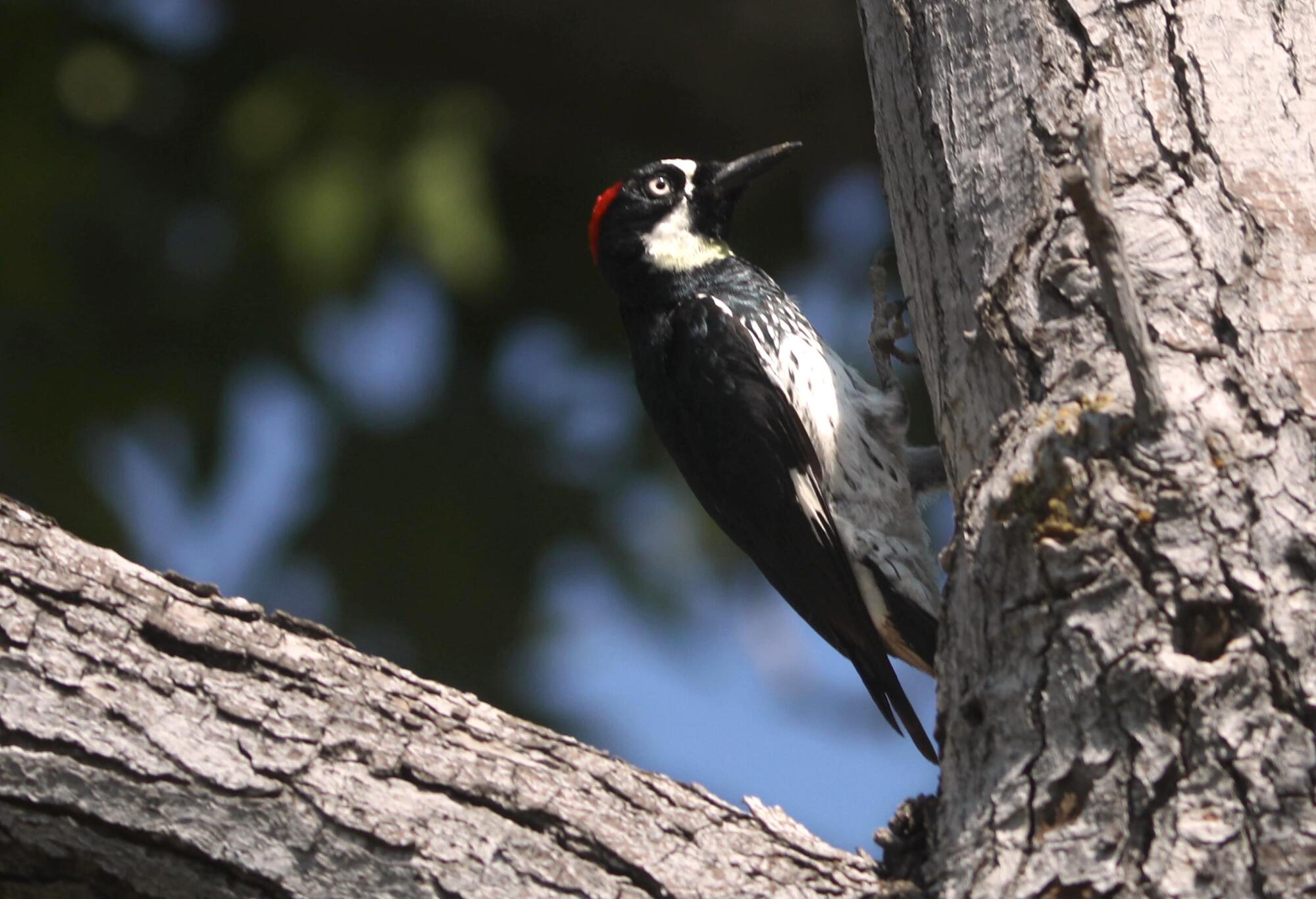
Instead of the sparrows, ravens, common pigeons and a Cooper’s hawk the bird watchers spotted in Boyle Heights, the manicured lawns and mature trees of San Marino bristled with a very different assortment of birds.
“There goes a band-tailed pigeon right over there,” Wood exclaimed, turning his attention from a red-tailed hawk. They also recognized acorn woodpeckers, a California towhee, dozens of turkey vultures circling overhead, a dark-eyed junco, a mockingbird, an Anna’s hummingbird and a black phoebe.
It was, the researchers said, a vivid illustration of the so-called luxury effect — the phenomenon by which wealthier, and typically whiter, areas attract a larger and more diverse population of birds.
“That huge difference in wealth, separated by only a few miles, really surprised me when I first moved here,” said Wood, who is from Santa Rosa, in the Bay Area.
In fact, when it comes to the Los Angeles Basin, the researchers say that bird species are remarkably segregated.
In a new study, the researchers argue that the difference in bird populations is a lasting consequence of racist home lending practices from decades ago, as well as modern wealth disparities.
Historically redlined nonwhite communities, such as Boyle Heights, have less tree canopy and greater housing density than greenlined neighborhoods. As a result, these areas have less bird biodiversity and larger populations of synanthropic birds — species adapted to dense urban environments such as house finches and sparrows, European starlings, common pigeons and northern mockingbirds.
Greenlined areas, on the other hand, have more trees and vegetation cover, which attract more birds and a greater diversity of them. Forest birds such as yellow-rumped warblers, band-tailed pigeons, acorn woodpeckers and black-throated gray warblers are more abundant in these areas, researchers found.
“The legacy of our discriminatory practices is still written into the city itself,” said study co-author Travis Longcore, an adjunct professor with the UCLA Institute of the Environment and Sustainability. “Even though those practices explicitly are outlawed, this city is an accretion of its history, and it doesn’t just go away because time has passed.”
Our city is a hub of avian superhighways and filled with glass buildings that birds can’t see. Requiring bird-safe glass in buildings could help reduce fatal collisions.
During the Great Depression in the 1930s, the government-sponsored Home Owners’ Loan Corporation was established to stabilize the nation’s housing market. It helped struggling families prevent foreclosures by swapping mortgages that were in, or close to, default with new ones that homeowners could pay for.
As part of the program, the corporation created security risk maps to evaluate mortgage lending risks. Greenlined areas were considered “best” for investment and tended to be white neighborhoods. Redlined zones were deemed “hazardous” and were disproportionately Black and other nonwhite communities.


Those maps were among the starting points for the authors. Between 2016 and 2018, twice during the non-breeding season from October to March, researchers conducted bird surveys across 132 locations in 33 residential communities in L.A. that had been greenlined, redlined or excluded from the risk assessment maps. In each location, they’d set a five-minute timer and jot down every bird they could see or hear.
The authors amassed data on race and ethnicity, residential housing patterns, the percentage of buildings, paved areas and tree canopy cover, and more. Their results, they wrote, verified that “patterns of income inequality, both past and present ... carry over to influence urban biodiversity.”
For Laura Redford, a history professor at Brigham Young University, the findings were no surprise.
“[The security risk maps] are indicative of trends that were already happening, and they codified things that were already in place,” said Redford, who has researched real estate development in L.A. from the early 20th century. “So the discrepancy in green space or in shrubbery, or the number of trees, those kinds of things, I think goes all the way back to how these spaces were developed and marketed in the first place.”
How did a dirt parking lot in the San Gabriel Mountains become a major flyway for migrating birds? Scientists can only guess.
Although the lending program ended in the 1950s, its segregationist legacy still shapes the environment — and health — of area neighborhoods.
Other researchers have found strong links between historically redlined communities and increased risks of diabetes, hypertension and early mortality from heart disease. Redlined communities are also hotter and have more pollution and less canopy cover and green spaces than non-redlined regions, studies show.

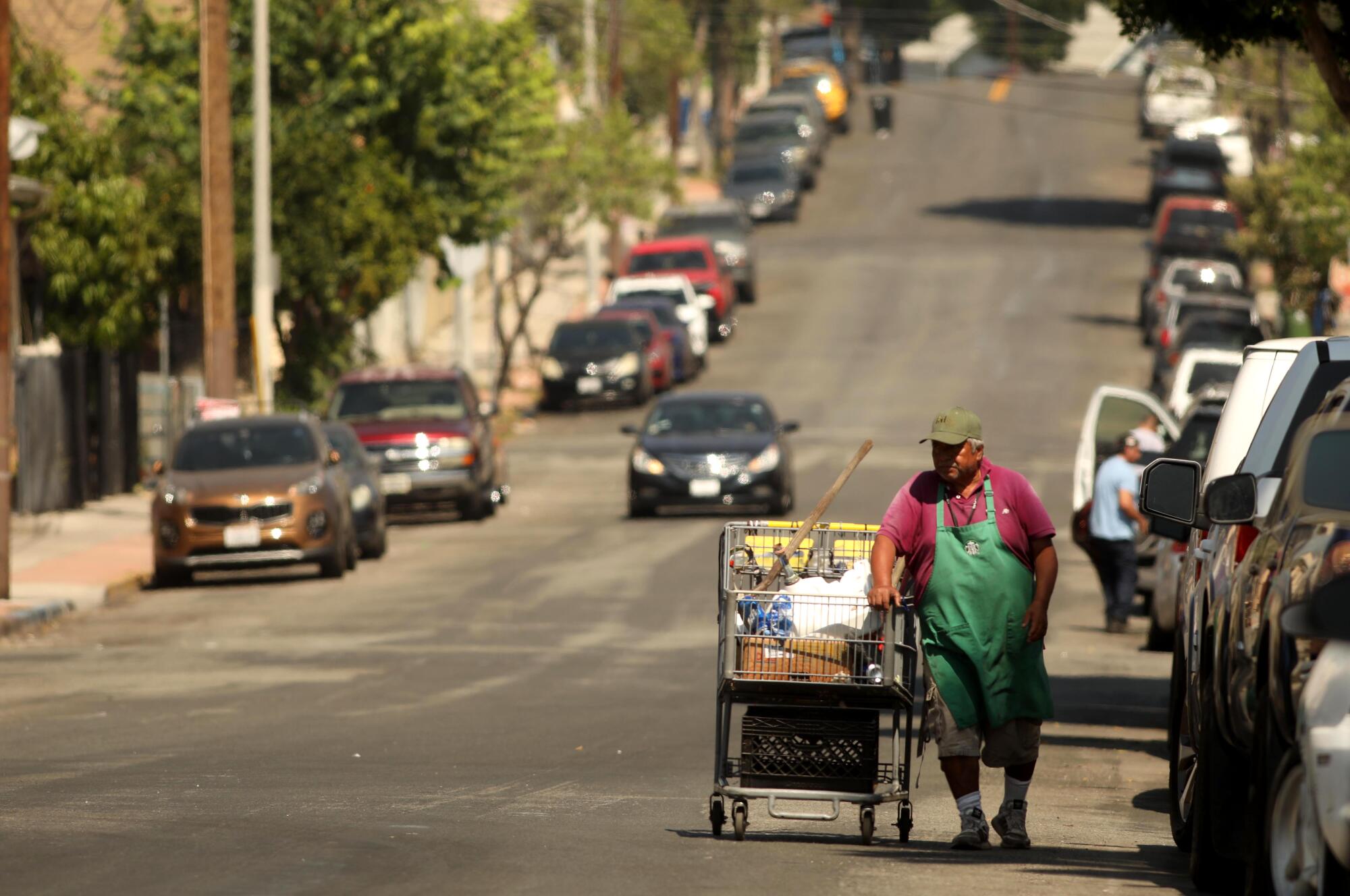
San Marino and Pasadena, for example, have average tree canopy coverage of nearly 26% and 24%, respectively, according to an L.A. County tree canopy map. The median household income in San Marino between 2017 and 2021 was $174,722, according to the U.S. Census Bureau. Pasadena’s was $89,661.
In comparison, Boyle Heights’ canopy cover is 12.6%, and the median income within the same time period was $69,778.
The availability of nature and its correlation with socioeconomic differences are patterns researchers have seen “over and over again globally” and are not unique to L.A. or California, said Danielle F. Shanahan, chief executive of Zealandia Ecosanctuary in New Zealand.
“People who live in more affluent areas have more tree cover, not just in the green spaces, but actually in their backyards as well,” said Shanahan, an adjunct professor with Te Herenga Waka Victoria University of Wellington. “And of course, that correlates with the biodiversity metrics, so things like birds.”
The ‘Mapping Los Angeles Landscape History’ project seeks to illustrate major Los Angeles-area Indigenous settlements.
Though few studies have examined the relationship between self-reported well-being and the diversity of plant and bird species in an area, they have shown conflicting results. In one, researchers found a positive effect; in another, no effect; and in a third, people reported feeling better when they thought an area was rich with species diversity.
“Nonetheless, such studies suggest that variation in nature itself, not just the general levels of provision of green space, has an important role in enhancing population health,” wrote Shanahan and authors of a paper on how urban nature benefits human health.
As plant pollinators and seed spreaders, birds are “really crucial to ensure that our natural systems are healthy and can continue and thrive in the future,” she added. “And that has a feedback loop for our own well-being.”
It’s a perspective Marcos Trinidad tries to impart to students and the L.A. communities he works with.
A senior forestry director for TreePeople and former director of the Audubon Center at Debs Park, Trinidad said that a neighborhood’s bird abundance and biodiversity speaks volumes about the health of its human residents.
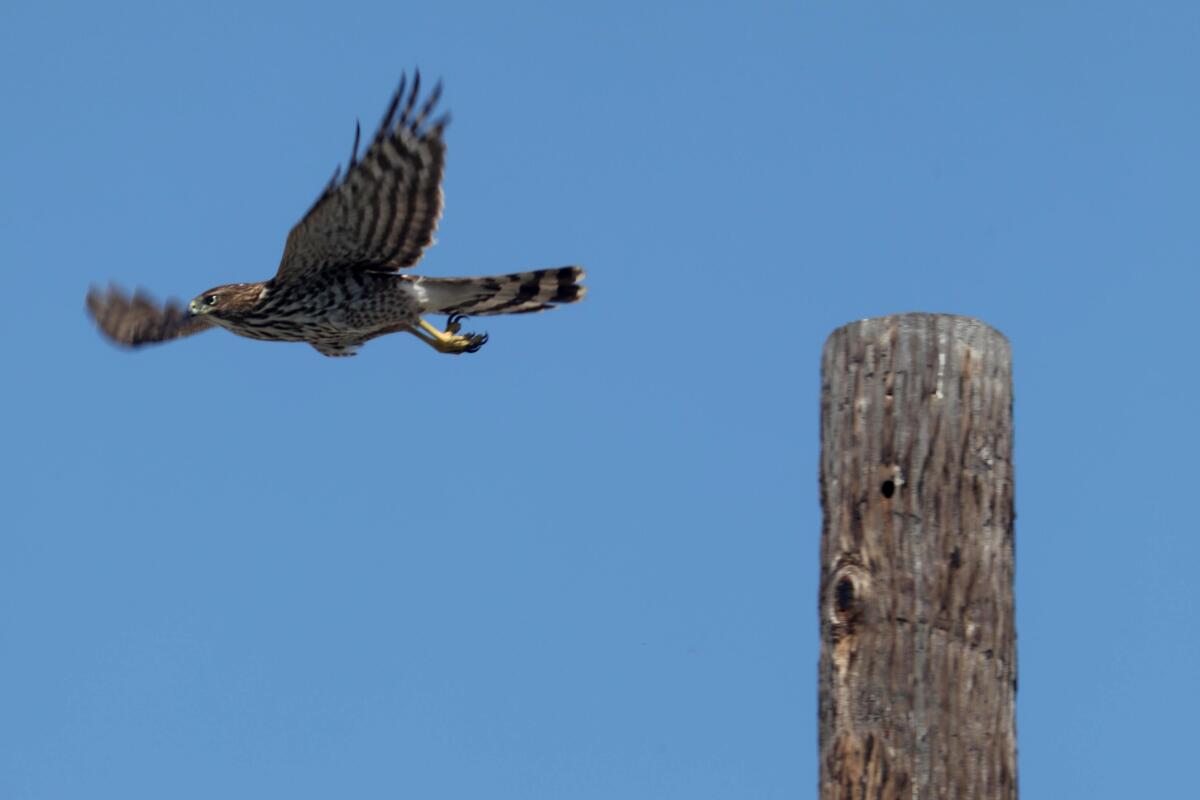
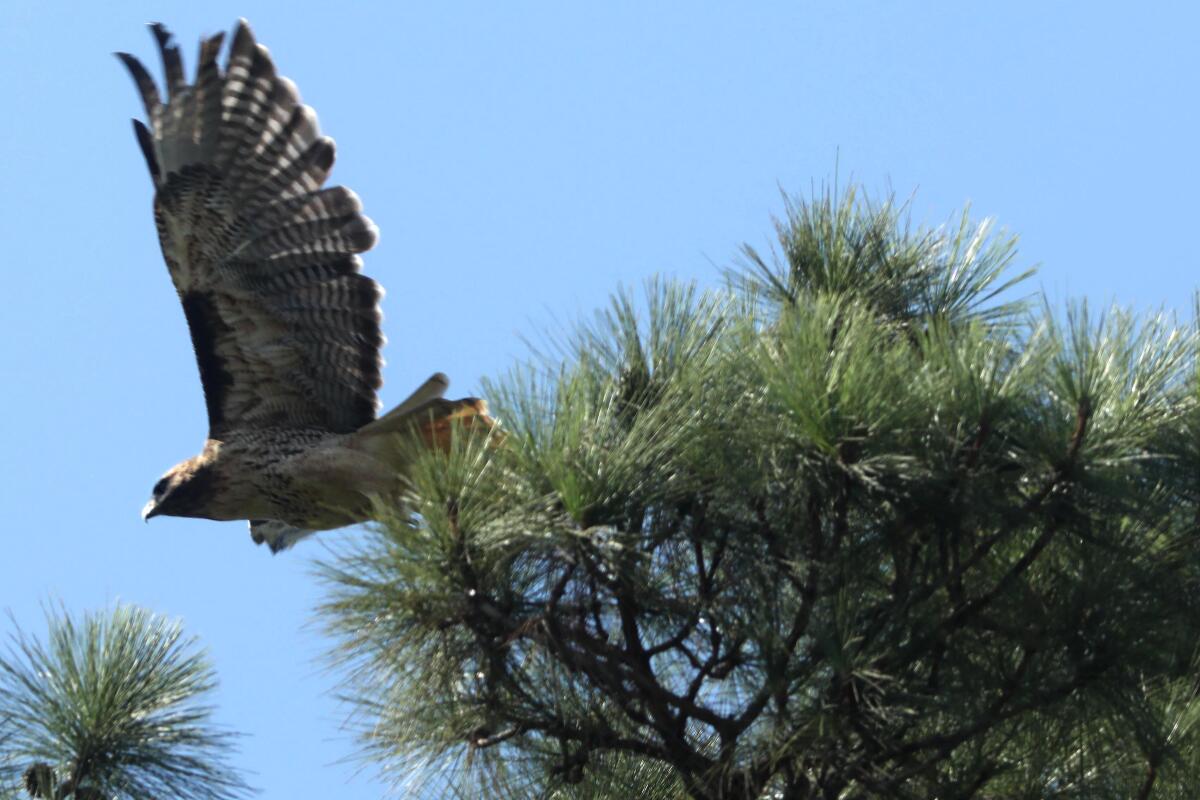
1. A Cooper’s hawk flies from a telephone pole in Boyle Heights. 2. A red-tailed hawk flies from a pine tree in San Marino. (Genaro Molina / Los Angeles Times)
“If we see an abundance of birds, and we have that connection with what those birds need, which food they eat, what shelter they require, what habitat they need to thrive, we can now start looking at our own environment and making those relationships to what we need to thrive and what we need in our own neighborhoods,” he said.
As a kid, Benitez also noticed the stark differences between his South Gate neighborhood and wealthier ones. But in his child’s mind, it was just the way things were.
Now he realizes there were larger systemic forces at play.
“I never looked at birds and trees the way that I do now,” he said. “Coming into the lab and being able to understand more deeply how different socioeconomic factors can impact things like birds, people, trees and the environment, that really turned the light on for me.”
In the paper, the authors write that if promoting urban biodiversity is a goal, “cities across the U.S. and the world must work to understand their racist and segregationist histories, which is a necessary step toward creating conditions that support urban wildlife along with a more equitable experience of wildlife for a city’s inhabitants. Otherwise, urban wildlife — in our case, birds — will likely continue to be as segregated as a city’s population.
“Without strong, yet careful intervention,” they continued, “residential urban biodiversity will continue to be primarily for the affluent in the City of Angels.”
